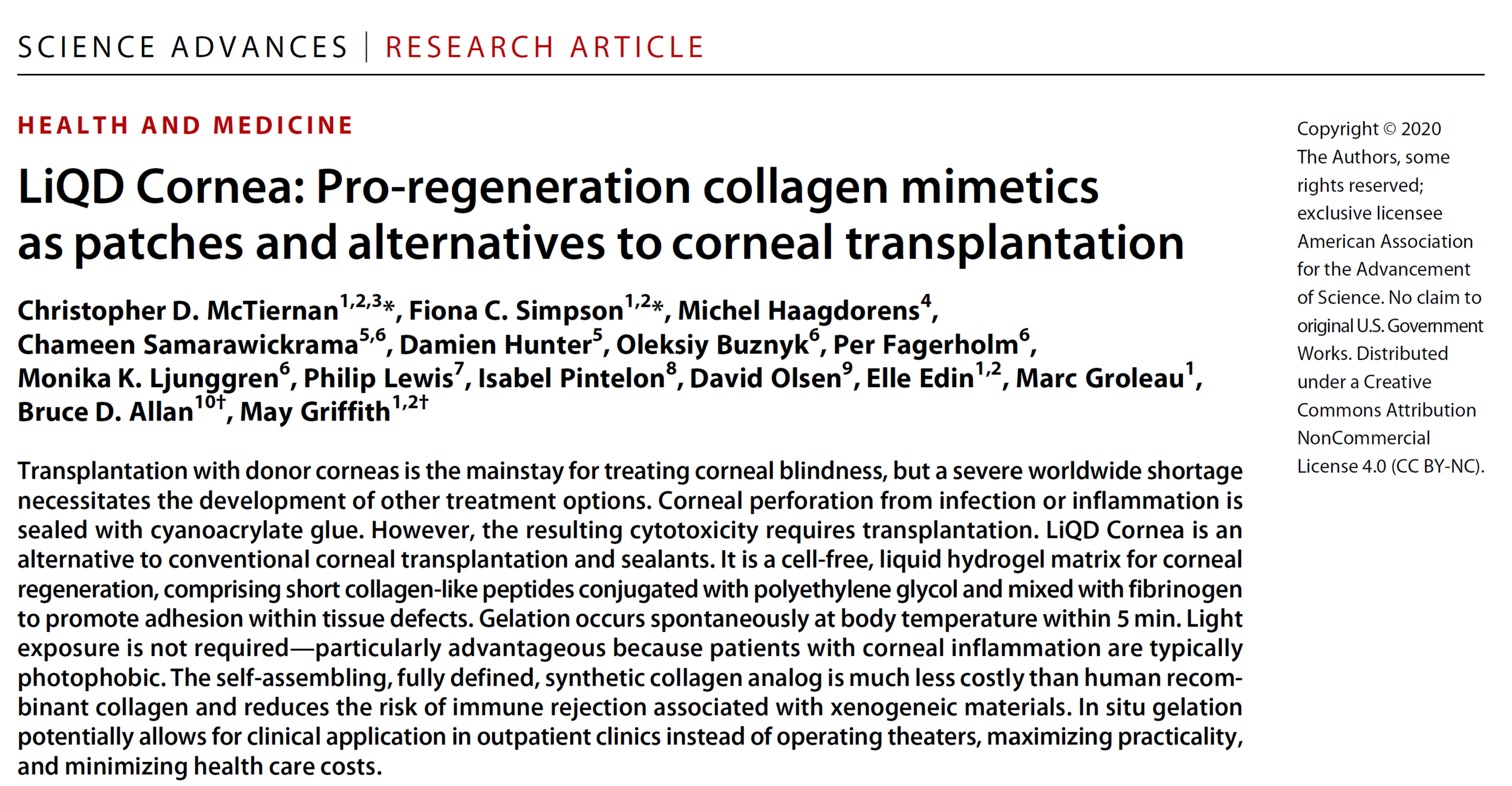LiQD Cornea
Corneal perforations are currently repaired using toxic cyanoacrylate glue that requires a subsequent corneal transplant. Biomimetic corneal fillers offer the opportunity to patch corneal damage using a glue that will regenerate the tissue.
Biological evaluation of LiQD Cornea.
(A) Immortalized HCECs cultured on LiQD Cornea hydrogels and control tissue culture plastic, showing that the hydrogels support epithelial growth. (B) Expression of T cell costimulatory molecules in BMDCs. Expression of CD40, CD80, and CD86 was measured by flow cytometry, and data are presented as a ratio of mean fluorescence intensity of the experimental samples to untreated BMDCs. LPS acted as a positive control for BMDC activation; *P ≤ 0.05 by Student’s t test. (C) Expression of pro-inflammatory M1 (CD86) and anti-inflammatory M2 (CD206) phenotypic markers at 4 and 7 days after exposure of naïve BMDM precursors to LiQD Cornea hydrogels. (D) Example of a human corneal perforation. (E) Postsurgical photos of rabbits immediately after injecting LiQD Cornea into a perforated cornea. The two-stepped surgically induced perforation can be seen. At day 2 after surgery, the air bubble placed under the cornea during surgery is prominent, indicating that the perforation was completely sealed. The perforated cornea was completed healed by 28 days after operation. Photo credit: Damien Hunter, University of Sydney. (F) Mini-pig corneas where the LiQD Cornea was tested as an alternative to a donor allograft, showing the gross appearance of the LiQD Cornea, syngeneic graft, and an unoperated eye at 12 months after surgery. Photo credit: Monika K. Ljunggren, Linköping University. McTiernan et al. Sci Adv. 2020:6(25);eaba2187. Reproduced under a CC-BY-NC license.
Fiona Simpson spoke about the results of the LiQD Cornea pre-clinical studies at the “32e Journée de la Recherche en Ophtalmologie de l’Université de Montréal”.


